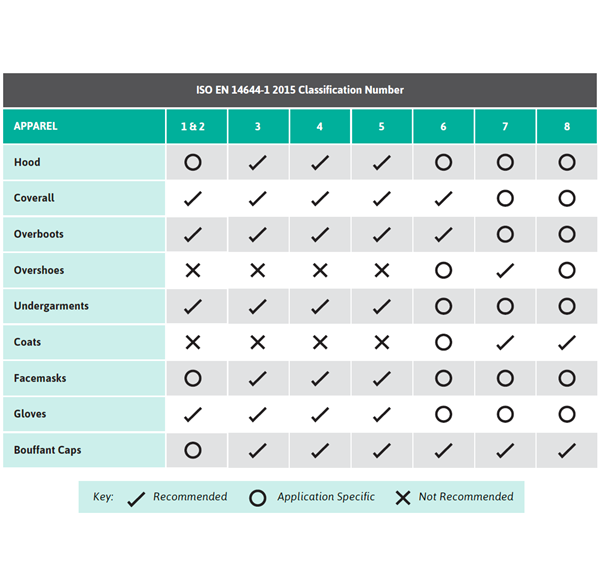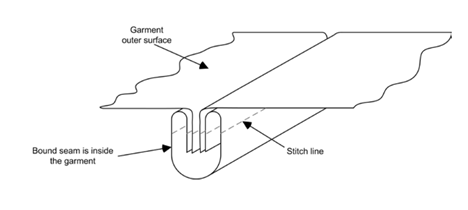Selecting the right consumables for use in your ISO Class cleanroom is vital in order to protect the sensitive Life Sciences processes being performed, whilst ensuring the finished products stay protected from sources of potential contamination.
There is currently no international standard for consumables worn within the cleanroom, instead the cleanrooms themselves have a cleanliness classification which is known as the ISO Class. The standard defines the maximum allowable concentration of particles per square metre for eight Class of cleanroom ranging from 1 – 8, with 1-3 being the cleanest, and which do not normally have any or very limited human intervention.
The biggest source of contamination to a cleanroom are humans, whom shed up to 100,000 particles per minute when sitting/standing, so it’s imperative that the appropriate clothing is worn to contain contamination and stop it from entering the controlled environment. In state-of-the-art ISO Class 4 cleanrooms no more than 352 particles of size 0.5µm per cubic metre may be present, and in an ISO Class 5 no more than 3520 particles.
The IEST-RP-CC003.3 standard for Garment system consideration for cleanrooms and other controlled environments, recommends the best practice for gowning of personnel as a critical aspect of cleanroom contamination control. The suggested garments which should be worn within each classified area include – Coveralls, Hoods, Overboots, Gloves, Facemasks and Undergarments.
Outlined below is guidance for the selection of garments or apparel and accessories appropriate for use in cleanrooms and controlled environments;
It’s also essential that cleanroom clothing is manufactured using the correct types of fabrics suitable for cleanrooms and controlled environments.
When selecting garments for cleanroom use, depending on the specific application, the IEST standard recommends evaluating the fabric properties including testing for (selecting those relevant to the fabric type);
• Cleanliness and cleanability
• Electrostatic properties
• Biological properties
• Durability
• Comfort
• Opacity
• Particle filtration efficiency
• Microbial penetration
• Chemical compatibility
• Fluid resistance
Construction of cleanroom garments is another important consideration, and the IEST standard outlines recommendations for thread and seam structure. Seams for cleanroom garments should be joining seams to avoid free-air/particulate passage from the inside of the garment to the outside environment. The IEST standard recommends for the construction of cleanroom garments that they are constructed using a bound
joining seam, as shown below;
BioClean-D™ Disposable cleanroom garments are manufactured according to the recommendations set out within the IEST-RP-CC003.4 standard, using the most effective barrier fabric and the best seam joining for containment of particles and fibers.




